This post may contain references or links to products from one or more partners of our parent company and/or subsidiaries of our parent company. For more information, visit this page.
Updated August 31, 2023
Considering adding new floors to your home? Congrats! You’re well on your way to adding beauty and value to your living space, and we want to help you to find the perfect flooring type to suit your needs. And if you’ve narrowed down your options to tile vs. wood floors (but need some help deciding between the two), you’ll love this handy guide.
Why Not Give Both a Shot?
If you already know both of these products can meet your needs, you should just order samples of each and see which is a better fit for your home. Our favorite tile brand is Paradiso and our favorite engineered hardwood brands are Doma and Proximity Mills; all offer easy sample ordering.
Paradiso
Visit their site | Find a retailer | Order samples
Doma
Visit their site | Find a retailer | Order samples
Proximity Mills
Visit their site | Find a retailer | Order samples
Below, we’ll take you through tile vs. wood floor cost, the durability and maintenance of tile vs. wood, and even the best areas of your home to install these flooring types. Finally, we’ll compare the pros and cons of hardwood with the pros and cons of tile, so that you can decide which is the best option for your home and lifestyle.
Wood and tile floors come in various forms.
Before we compare the qualities of wood vs. tile, it’s important to break down the wide array of options within each flooring type.
Types of Wood Flooring
Not all wood flooring types are the same. Each offers its own unique properties and is suitable for specific needs. Let’s break them down.
- Solid wood: To put it simply, solid wood is exactly as it sounds: it’s one single type of wood that’s the same throughout.
- Engineered Wood: This type of wood is created by adding a thin veneer layer of solid wood to a thicker layer of rigid plywood or high-density fiberboard. Engineered wood planks may be a more cost-effective option, especially if you love the look of exotic woods like mahogany or teak.
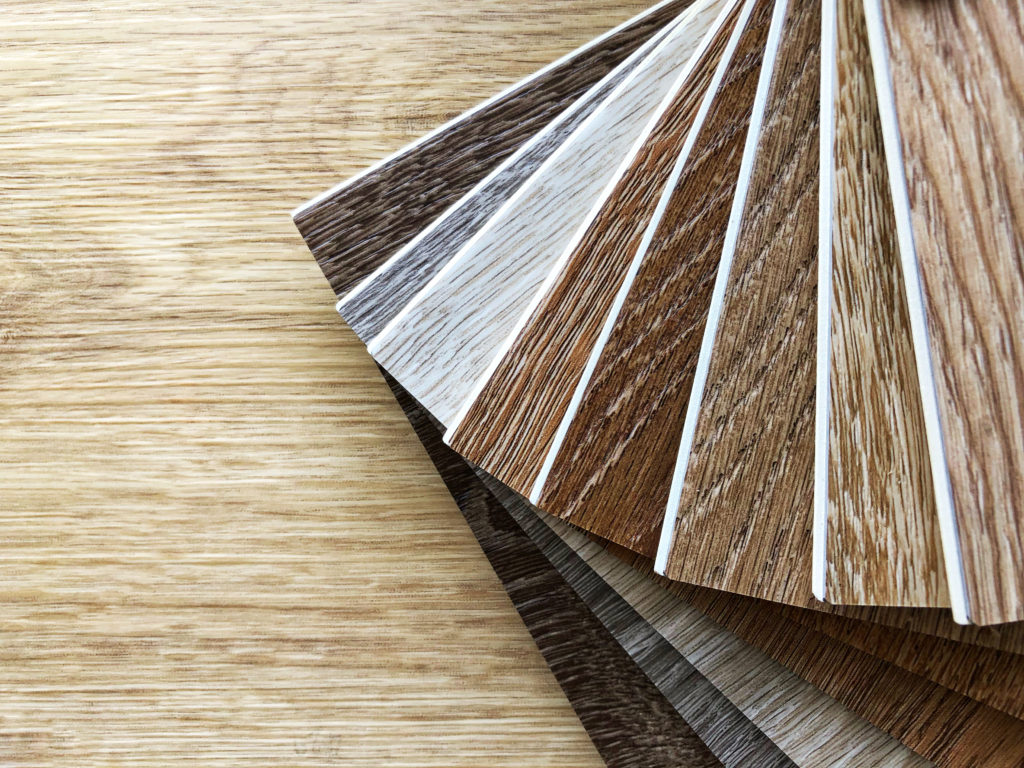
Types of Tile Flooring
There are so many different types of tile, it’s easy to get lost in a sea of options. Tile flooring has been a staple in home design for centuries, and contemporary tile is having quite a moment in the spotlight right now.
Here are a few of the most popular types of tile:
- Ceramic tile is made from kiln-firing clay at super-high temperatures to create a hard and durable flooring option.
- Porcelain is a type of refined clay tile that is baked at a higher temperature than common ceramic, making it even more durable and less prone to staining.
- Cement tile is poured and allowed to harden at room temperature, rather than fired in a kiln. It is more porous than clay tile, but it’s one of the few tile flooring types that can be refinished.
- Stone tiles include popular natural options like slate, granite, marble, and sandstone. These types of tiles offer natural variation, so no two pieces of stone tile are exactly alike.
- Wood-look tile offers the benefits of tile flooring with the appearance of natural wood.
Best Brands of 2024
Ceramic Tile vs. Hardwood Flooring Cost
Cost is often one of the first considerations when comparing tile vs. wood floors. Tag price is an important factor, of course, but it’s a good idea to think about installation costs, return on investment, and longevity as well.
Average cost per square foot for tile vs. wood floors
Engineered hardwood with a veneer made from common tree species (like oak) can cost an average of $3 to $10 per square foot, while more rare and exotic species can cost more. Solid hardwood can cost the same or more—sometimes $15 per square foot or more for specialty woods.
Porcelain and ceramic tile can range from around $1.50 to $5 per square foot. Stone tiles can cost significantly more.
What are the installation costs of wood vs. tile?
Unless you’re a DIY expert with an extensive knowledge of how to replace flooring, it’s usually best to leave installation to the professionals. The one exception to this would be materials that are sold as click-lock or click-together flooring, which fit snugly together without much fuss.
Both of these types of flooring require a high level of precision and experience to install, and we always recommend that you find a local retailer to discuss the associated costs, which can vary by location and the scope of work.
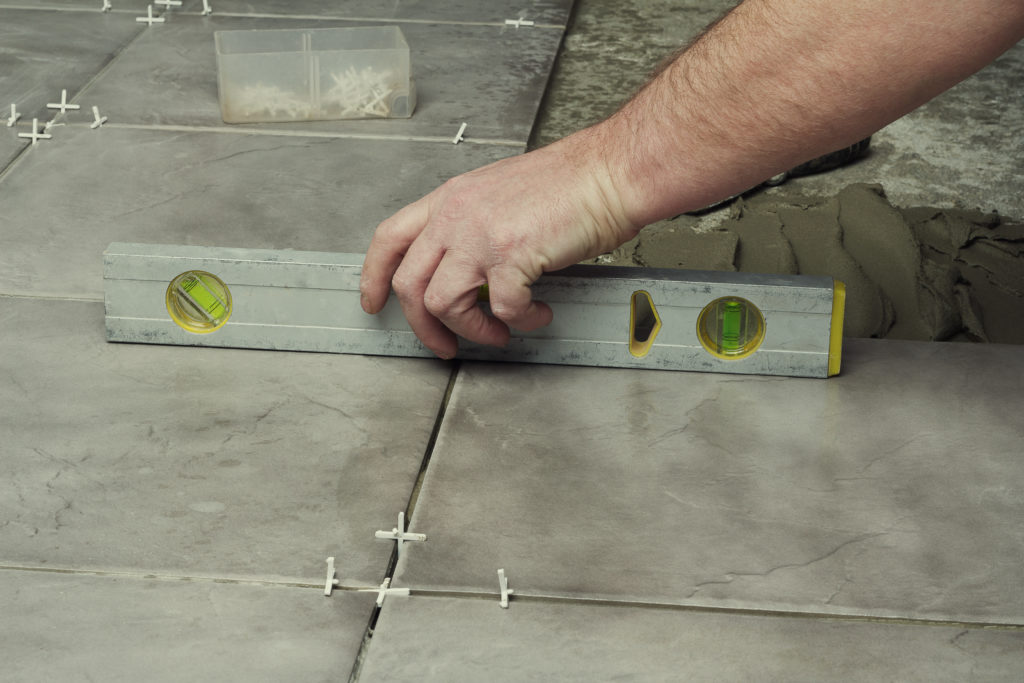
Tile vs. wood: which adds more value to a home?
Resale value is an important consideration when investing in new floors. When it comes to laminate vs. hardwood floors, for instance, it’s a no-brainer—real wood will always add more value. But what about wood vs. tile?
The truth is, it all depends. Wood floors tend to have a higher return on investment and can boost sales prices—unless you live in a hot and humid climate, like Florida, where tile may add more value.
Maintenance and durability of a tile vs. wood floor
Properly maintaining your new floors can prolong the life of whichever type of flooring that you choose, and some flooring types are easier than others in this regard. Luckily, both wood and tile can be long-lasting and durable options. There are just a few things to consider when it comes to maintaining wood vs. tile.
Hardwood can scratch and show wear
Are you thinking about putting hardwood floors in a high-traffic area? If so, you’ll want to choose a wood type that has a high rating on the Janka Scale. This scale measures the amount of force needed to damage the wood. The higher the score, the more resistant your wood will be to damage like denting and scratching.
Refinishing can prolong the lifespan of wood floors.
Although solid hardwood flooring can show wear and tear, it can be refinished almost indefinitely over the course of its use. Some types of engineered hardwood can be refinished, but not all of them. Refinishing can be a great way to make your hardwood floors look brand new all over again.
Tiles are scratch-resistant, but are they damage-proof?
Tile is one of the most durable flooring options, particularly porcelain varieties. All flooring types have their limits, however, and it is possible for tile to crack, chip, and scratch. The good news is that it is possible to replace individual tiles with a little do-it-yourself flooring know-how.
It can be easier to deep-clean certain tiles.
You can mop and scrub porcelain and ceramic tile with mild detergents and water. Natural stone, on the other hand, needs some special TLC, as common detergents can cause discoloration.
Hardwood requires material-specific cleaning products to avoid damage to the finish or the underlying wood grain. Talk to your flooring retailer to find out which cleaning products they recommend for your flooring type.
Can tile be refinished?
Some types of tile can be refinished, especially cement tile. Find a flooring store near you to discuss which tile options are able to be refinished.
Where can you put wood floors? Where can you put tile?
When it comes to wood vs. tile floors, there’s a big difference in where each type of flooring should be used. In fact, they’re practically as different as carpet vs. laminate!
Water-resistant tile can be installed in wet areas.
Tile has long been used in moisture-prone areas of the home because it is one of the most waterproof flooring options out there. Certified porcelain tile requires a water absorption level of 0.5% or less, making it one of the best flooring types for wet areas.
Unglazed tiles are less slippery when wet, compared to glazed tiles. If you’re considering tile vs. laminate floors in your foyer, kitchen or bathroom, keep slip-resistance in mind.
Hardwood contracts and expands due to temperature and moisture
Solid wood is prone to moisture damage and should not be used in areas like kitchens or bathrooms, which are likely to get wet. Humidity and water can cause solid hardwood to warp. If you want the aesthetics of wood in your bathroom or kitchen, consider using wood-look tile.
What is wood-look tile?
And speaking of which: love the look of wood, but worried about scratches and water damage? You’re in luck! Wood-look tile is here to save the day. These tiles give you the durability and cleanability of porcelain or ceramic, but with the look of wood grain!
Wood-look tile adds design variety.
The best part about wood-look tile is that you can apply it to areas of your home where hardwood can’t go. Think of the design possibilities!
Is wood-look tile more eco-friendly than hardwood?
If sustainability is a major factor in your purchasing decisions, you’ll be happy to know that wood-look tile is an excellent, sustainable option. Tile emits little to no VOCs, which impact indoor air quality. At the end of its life cycle, wood-look tile can also be recycled at special facilities and used for paving.
How does wood-look tile compare to hardwood flooring?
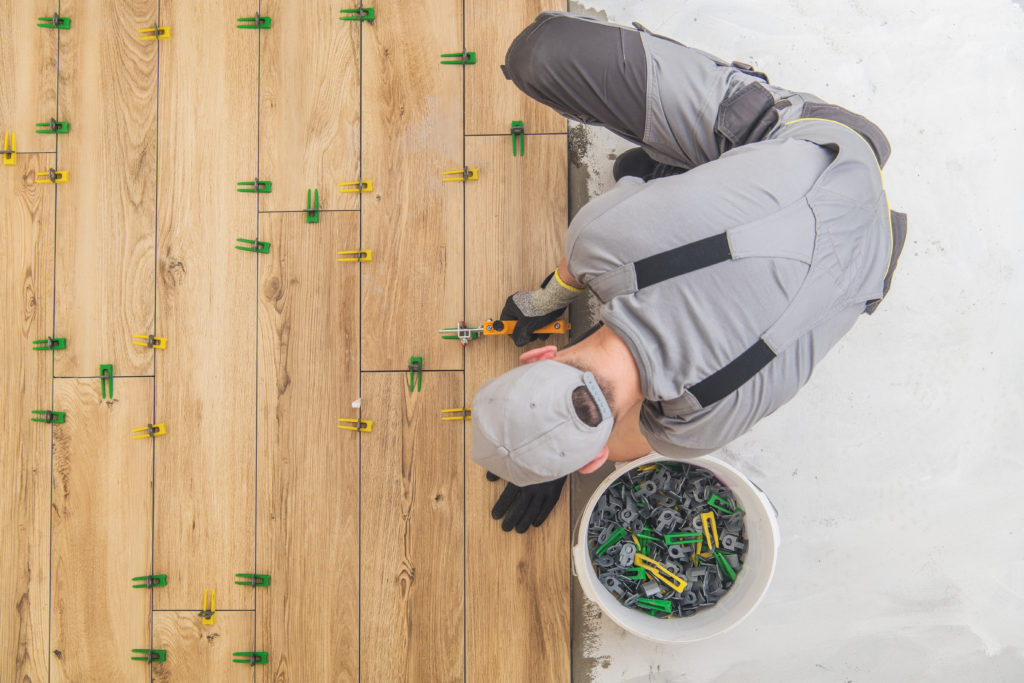
We’ve already discussed some of the practical factors in the tile vs. wood floor debate, but it’s also important to consider how these flooring types will fit in with your lifestyle.
Tile vs. wood floors: which are more slip-resistant?
Slip resistance is measured by the Coefficient of Friction (COF), which many flooring providers list on their spec sheets. Speak to your local flooring retailer to find out the COF for your desired flooring type.
Glazed tile can be slippery, while unglazed tiles tend to have more grip. This is especially important when choosing a material for areas with potential spills. While this is less relevant to wood flooring in dry areas, different wood finishes provide different levels of slip resistance as well.
Which type of flooring makes more noise?
If you’ve read all about carpet, you know that one of its advantages is sound absorption. Wood and tile, on the other hand, tend to be a bit noisier. While older wood floors are prone to creaks and squeaks, hardwood still tends to absorb more sound than tile. Consider adding area rugs or peel-and-stick carpet tiles to cut down on sound.
Tile vs. hardwood: Which is more kid-friendly? Which is more-pet friendly?
Whether you’re a dog dad or a mother-of-three, you’ll want to keep your loved ones in mind when choosing tile vs. wood.
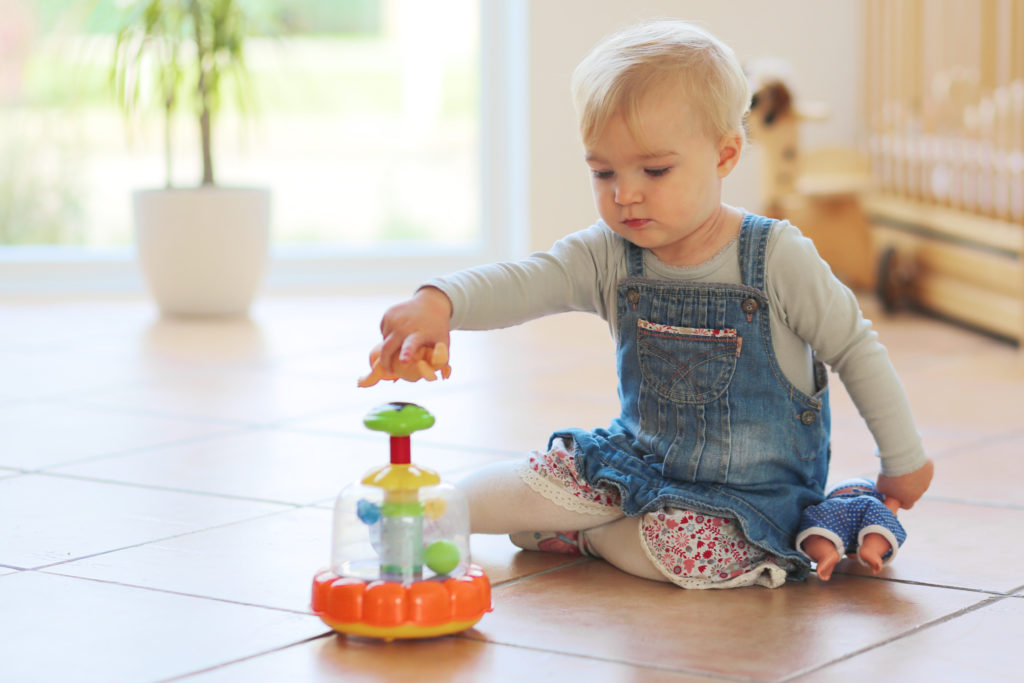
Hardwood is more slip-resistant, but prone to damage.
When you have kids and pets, it can be harder to keep your hardwood floors looking pristine. Spills, drops, and scratching claws can all have an impact on wood floors. If your little ones love to run around the house in their socks, however, wood can be a better choice than glazed tile.
Tile is water-resistant but a bit more slippery.
Conversely, tile floors stand up better to water and wear, although they can be slippery when wet. You may want to consider slip-resistant tile in areas where kids and energetic pets like to run and play.
Advantages of hardwood
Each flooring type has its own unique benefits and drawbacks. Let’s start with some of the pros and cons of hardwood.
Hardwood increases home value with a great ROI.
According to Realtor.com, installing hardwood floors is one of the best investments you can make to add value to your home. Depending on the type of wood you choose, you can roughly expect to see a 70%–80% return on investment.
Hardwood is warm on your feet and easy on the joints.
If you live in a location where you experience cold winters, you know the feeling of rolling out of bed onto a cold floor. It’s… unpleasant, to say the least. Wood floors have more insulative properties and can keep your feet warmer. They also have a bit more give than harder flooring surfaces like tile.
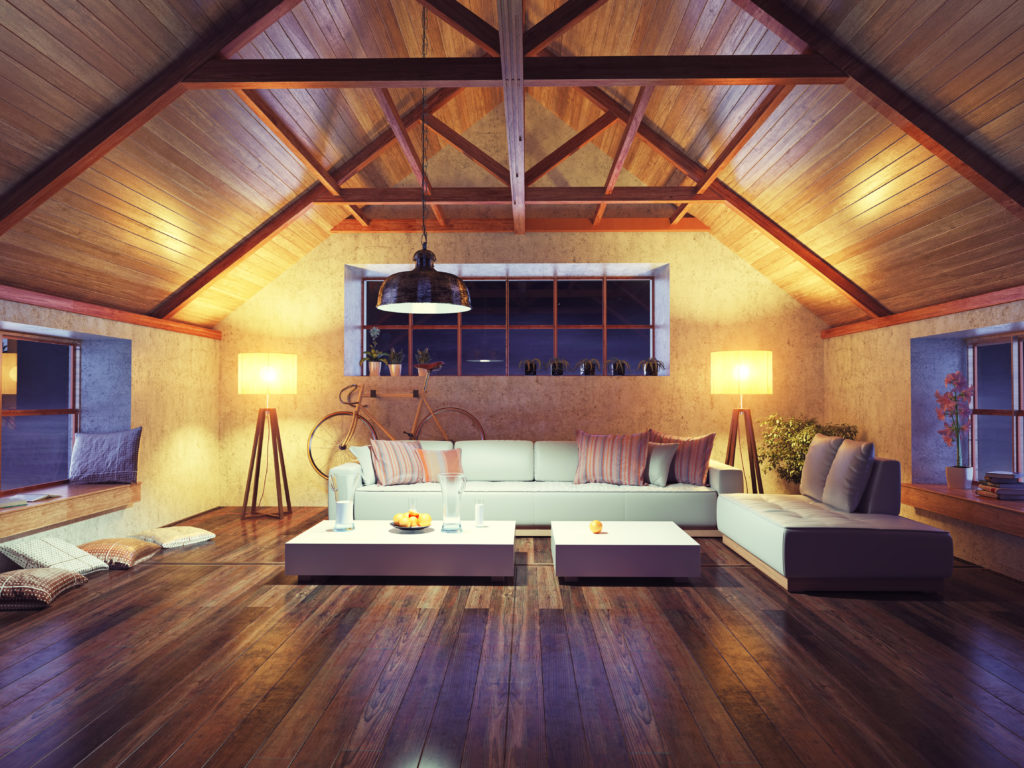
If comfort is at the top of your list, check out some of the best cork flooring options to learn just how springy cork can be!
Disadvantages of hardwood
We think hardwood is absolutely fantastic, but it has a few downsides, depending on your situation.
Hardwood may require more maintenance.
Hardwood requires a bit more care when compared to tile. To prevent scratching, we recommend sweeping daily to remove grit. You’ll also want to use special wood-approved cleaning products and refinish every 7 to 10 years.
There may be height and location constraints.
Solid hardwood is typically sold as planks that are ¾” thick. This high profile could pose an issue in certain homes, especially those with metal doors that are more difficult to cut to size. Wood is also not the ideal choice for bathrooms, kitchens, basements, or hot and humid climates.
Hardwood flooring can cost more overall.
When you consider the cost per square foot plus the price of professional installation and special maintenance, you can often expect to pay more overall for wood vs. tile. If you’re working with limited funds, this can be a drawback.
Advantages of wood-look tile
We love wood-look tile because it offers the classic appearance of hardwood with some of the best advantages of tile.
Wood-look tile keeps costs lower.
As mentioned, wood flooring can get pricey. From cost per square foot to maintenance costs, wood-look tile can offer the beauty of wood while putting less pressure on your wallet.
Tile is highly durable.
Tile is often easier to clean and requires little maintenance other than the occasional re-grouting. It’s less prone to dents and scratches, too!
It’s non-allergenic
Tile’s nonporous surface resists trapping dirt, dust, and allergens. If you’re an allergy sufferer, tile can be one of the best types of flooring for your indoor air quality.
Disadvantages of wood-look tile
Tiles can be cold and hard.
Tile flooring can keep your home cooler and make you feel great, especially if you live in a warm climate. In colder regions, however, the feeling of tile on your bare feet isn’t ideal. If you’re willing to invest, you can mitigate the cold with radiant heat flooring. Tile is also rigid, and standing on it for long periods of time can put pressure on the body.
Tile flooring can be heavier than hardwood.
Tile can be very dense and heavy, and this is something to consider, especially if you are installing it on the second floor or higher. Its weight can also impact transport and installation costs.
Conclusion
Choosing between wood vs. tile floors can seem difficult, as both are fantastic, long-lasting materials that can add beauty and value to your home. So which should you choose?
It all comes down to your specific needs. Do you want a low-maintenance, waterproof flooring material that’s durable and can go almost anywhere? Tile flooring may be perfect for your home.
Want to add warmth, comfort, and a great resale value in a cool, dry area? Perhaps hardwood flooring is the right choice for you!
Want the best of both worlds? Invest in some wood-look tile!
Where can I find a flooring expert near me?
Whichever flooring type you choose, do yourself a favor and find a local flooring store near you by using our convenient store search tool. Local flooring experts can give you the individual attention you deserve, and they are the best sources of information when searching for the perfect flooring for your home.
And to learn more about other types of flooring, check out:
About The Author

Kelly Pitts
March 17, 2020
Kelly is a freelance lifestyle and wellness writer. Her guilty pleasures are coffee and celebrity gossip. When she’s not hard at work creating content, you can find her traveling the world, being a crazy fish mom, and cooking vegan food.
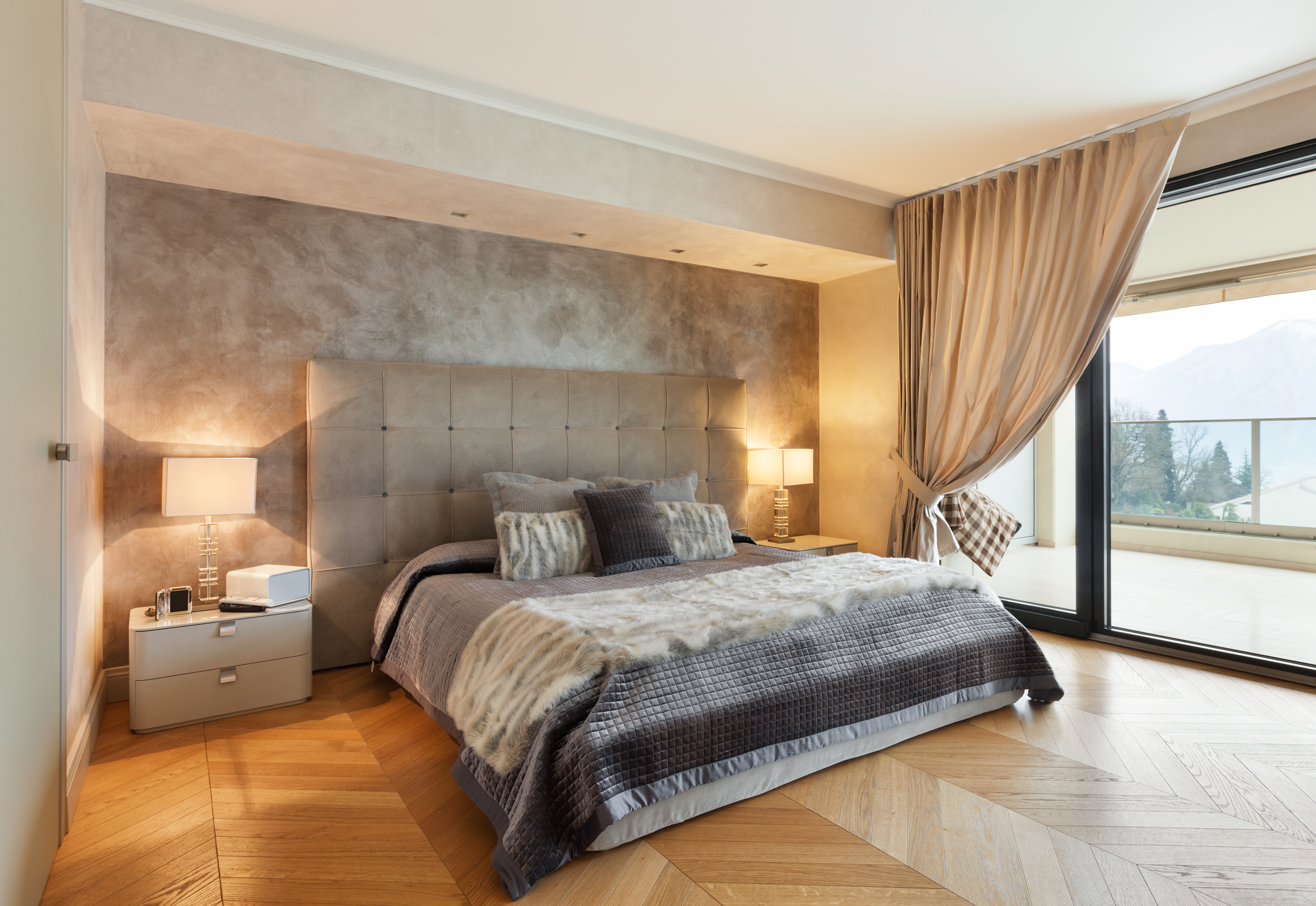
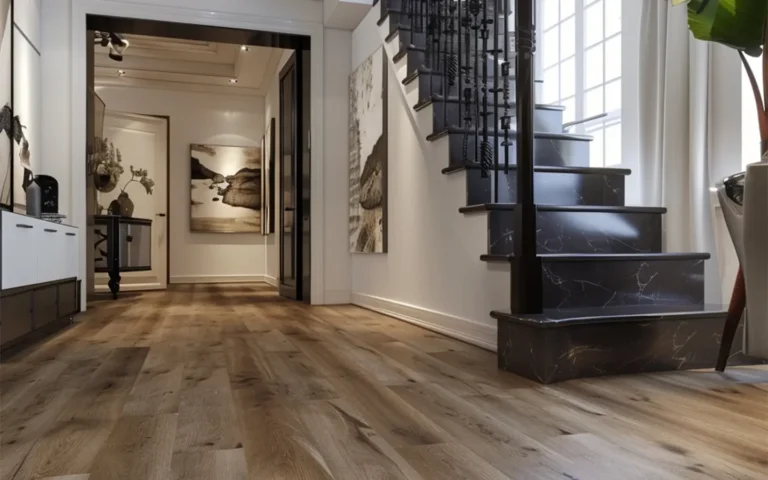

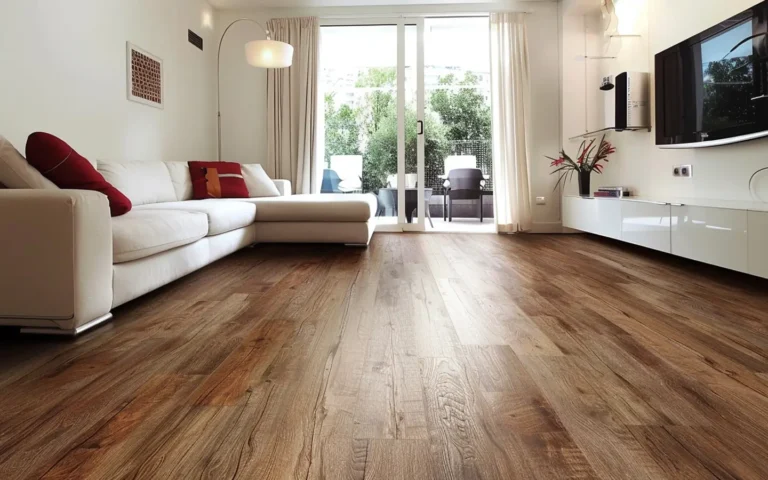


1 comment
Landon "Wood Expert" Edgington
Well, if you’re planning not to buy flooring again for the next 5 -10 years, opt to tiles it would save you much